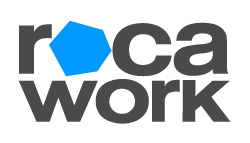Zendesk Conversational Experience Best Practices
In the world of customer service, the conversation between a business and its customers can be a make-or-break moment. With the rise of digital communication channels, mastering the art of conversation has become even more critical. Fortunately, experts like Dominic are here to guide us through the best practices of Zendesk Conversational Experience. In this article, we'll delve into the valuable insights shared by Dominic, who discussed various aspects of conversation management, including when a conversation should end, the concept of a "customer close," the "3 strike session," addressing inactivity, handling multiple ticket types, and some extra best practices.
When Should a Conversation End?
Dominic emphasizes the importance of knowing when to conclude a conversation. Conversations shouldn't drag on indefinitely; instead, they should end when the issue is resolved or the customer's query is answered to their satisfaction. A well-timed closure leaves a positive impression and ensures efficient use of resources.
Also read: Zendesk Messaging | Chatbot & Flowbuilder New Features
Customer Close
The concept of a "customer close" is a brilliant idea introduced by Dominic. This means allowing the customer to end the conversation when they are ready. By giving them control, you show respect for their time and preferences. Encourage customers to express their satisfaction or ask for further assistance before concluding the conversation.
The "3 Strike Session"
To maintain quality and efficiency in customer service, Dominic suggests implementing the "3 strike session" rule. If a customer's issue remains unresolved after three interactions, it's time to escalate the conversation or involve a senior support agent. This proactive approach prevents unnecessary back-and-forths and ensures that complex issues are addressed promptly.
Also read: How To Setup Zendesk according to ChatGPT from OpenAI
1-2 Minutes of Inactivity
In today's fast-paced digital world, customers expect swift responses. Dominic recommends monitoring conversations for inactivity and setting a 1-2 minute threshold. If a customer remains inactive beyond this time frame, consider sending a polite reminder or closing the conversation with a message like, "Feel free to reach out again if you have more questions."
Handling Multiple Ticket Types
Efficiently managing various ticket types is crucial in Zendesk. Dominic advises creating clear categorizations for different types of queries, such as sales inquiries, technical support, or billing issues. This not only streamlines your support process but also ensures that each ticket gets the specialized attention it requires.
Also read: The 2 Types of Customer Experience: Which One Are You Providing?
A Few Extra Best Practices
Dominic also shared some additional best practices to enhance Zendesk Conversational Experience:
a. Personalization: Address customers by their names and reference previous interactions to create a more personalized experience.
b. Embrace Automation: Use chatbots and automated responses to handle routine inquiries, allowing support agents to focus on complex issues.
c. Proactive Communication: Reach out to customers before they contact you with proactive messages, such as order updates or relevant product recommendations.
d. Feedback Loop: Encourage customers to provide feedback after their interactions. This helps you identify areas for improvement and highlights what you're doing right.
e. Data Analytics: Leverage data analytics to gain insights into customer behavior and preferences. This data can inform your support strategy and improve the overall customer experience.
Conclusion
Zendesk Conversational Experience is an essential aspect of modern customer service, and Dominic's insights offer valuable guidance on how to excel in this area. By knowing when to end conversations, implementing a customer close approach, using the 3 strike session rule, addressing inactivity, handling multiple ticket types effectively, and incorporating extra best practices, businesses can elevate their customer support game and create meaningful, satisfying interactions. Dominic's wisdom is a testament to the continuous improvement that Zendesk and similar platforms can offer to enhance the customer experience.
Are you trying to implement these practice into your own business? Let us lend a hand!
